Collection overview
The recordings are from three different areas of the Solomon Islands. The labels indicate that five recordings are from Malaita, three from the Bougainville Straits area, including the island of Mono and three from the New Georgia area. Our research suggests that the recordings may all have been made in Auki and the surrounding area by performers from these areas.
These recordings are not available online as participatory research and community consultation are still ongoing in the Solomon Islands.
Warning: The description of one of the items included on this page reproduces an original term from the collection item description which is now considered discriminatory, harmful or offensive.
The information about the performers and Edge-Partington’s travels suggests that he made all of these recordings at some point after 1 September 1909. It is unlikely that he visited Langalanga Lagoon for anything other than a fleeting visit before he moved to Auki in 1909. Some of the performers left Mala in March 1911, and the performers who started to work for Edge-Partington in September 1910 are not mentioned again after February 1912, when Edge-Partington left Mala for his long furlough in England. Therefore the most likely date range for these recordings is 1 September 1909 – 22 February 1912, or 1 September 1909 – January 1915. It is possible that they were made any time between December 1904 and January 1915.
There is a small piece of newspaper crumpled up inside one of the cylinders, C83/1510. This piece of newspaper cannot be securely identified or dated, and it seems likely that it was torn from a news summary or digest. It can be dated to November 1912 as it includes a review of a concert in London from 9 November 1912. However, the piece of newspaper was probably added when the cylinders were being prepared for travel, so it is not clear what this date of November 1912 relates to.
There is no information on where the phonograph used to make these recordings was from, whether Edge-Partington owned it, whether it was also used to play pre-recorded cylinders, or whether he was loaned it by someone else.
Edge-Partington may have been encouraged to make phonograph recordings by Arthur Hocart, WHR Rivers or the trader, Fred Green. Hocart and Rivers arrived on Simbo Island on 14 May 1908; Edge-Partington was away when they arrived, but he returned to Gizo on 20 July 1908 and remained there until May 1909. Rivers left New Georgia in September 1908, but Hocart was there until 5 January 1909. At the end of August 1908, Hocart and Rivers chartered a yacht from a trader, probably Joseph Binskin, for a month to travel around the island of Vella Lavella. Binskin had stations on Simbo, Gizo, and Vella Lavella, and the route from Simbo to Vella Lavella passes by the island of Ghizo. It is likely that they would have stopped at Gizo station en route.
Edge-Partington almost certainly knew Fred Green, the trader stationed on Simbo who assisted Hocart and Rivers. Green was married to Tiro, a woman from the hamlet of Tumbi on Simbo; he owned a coconut plantation and trade store on the island.1Tim Thomas notes “Tumbi is a hamlet in the Narovo district on the island of Eddystone/Simbo/Mandegusu. It is located on the shore of Narovo bay, and is where Green had his house, trade store, and jetty for loading copra etc.” – the remains are still there (email to Barnecutt, 12 March 2021). Green made and sent wax cylinder recordings to Rivers in 1909, after Rivers had left the region. In the accompanying documentation Green noted that he had trouble as the cylinders were “very mouldy and make a lot of noise while recording”; he noted that there were only “4 good records” out of twenty (letter from Green to Rivers. 5 January 1909 in Haddon papers bundle 12018 Cambridge University Library).2https://nla.gov.au/nla.obj-1121894961/view We do not know if these four cylinders have survived, and we do not know where Green obtained the phonograph that he used to make these recordings, or what happened to it subsequently.
There are a number of photographs showing Thomas and Mary’s life in Auki from 1913 to 1915. One photo shows that they had a piano at their house (Moore 2019:204, n. 7) which suggests that they were interested in music.
The Cylinders
The cylinders in this collection are all brown wax cylinders. The cylinder boxes for eight of the eleven cylinders are labelled Edison Gold Moulded Records,3http://cylinders.library.ucsb.edu/history-goldmoulded.php which were used for black wax cylinders manufactured from 1902 by the Edison Phonograph Co.4https://www.cylinder.de/guide_black-wax-cylinders.html The cylinder boxes for the other three are labelled Edison Amberol Records. Both Gold Moulded and Amberol cylinders were pre-recorded and mass-produced, and could not have been shaved for reuse. They typically had the title printed on the lid, as well as embossed on the rim of the cylinder. The Gold Moulded cylinders had a two-minute playing time, whereas the Amberol cylinders had a four-minute playing time. It is evident that all of these cylinder boxes were re-used to house the brown wax cylinders that make up the collection. The brown wax cylinders may have been sold without individual boxes.
Handwritten labels on the side of the cylinder box of C83/1510 and the lid of C83/1514 note the titles of pre-recorded tracks, suggesting that the original lids had been mixed up or misplaced at some point, or that the cylinder boxes contained brown wax copies of these pre-recorded tracks that may have been shaved down to be reused.
Labels
All of the cylinders except C83/1514 have a round label attached to their lid. The handwriting, in ink, and the layout is the same on all of the labels; the consistency of the labels suggests that they may have been written at the same time. C83/1514 has lost its label, and information about the recording is scrawled across the cylinder lid in pencil. C83/1510also has some writing on the side of the cylinder box. Written on or near the label on the cylinder lid is the British Library shelfmark, a four-digit number written in pencil, and an earlier British Library identifier, in pencil. Two of the cylinders have a date written on the lid in ballpoint pen, ‘6-7-83’ (i.e., 6 July 1983), which is the date that the cylinders were dubbed at the British Library.
Offensive language
Cylinder C83/1510 has a label on the cylinder lid that contains information about the recording. However, on the side of the cylinder box is another title, originally deciphered and catalogued as ‘The Bullfrog and the Poor’, that further research has identified as ‘The Bullfrog and the Coon’. This was a song from the 1905 stage show of the Wizard of Oz in New York; the song was commercially released on cylinder in 1906.5There is more information about the song: http://www.hungrytigerpress.com/tigertunes/bullfrogblues.shtml The original recording is available for listening: http://cylinders.library.ucsb.edu/search.php?queryType=@attr+1=1020&num=1&start=1&query=cylinder3101
This almost certainly references a pre-recorded track which bears no resemblance to the current content of the cylinder. The ‘Bullfrog’ track was most likely on a black wax cylinder previously kept in that cylinder box, or perhaps it had been copied onto a brown wax cylinder that was subsequently shaved down and recorded over with the current recording. The British Library follows best practice in not altering historical record and acknowledges the offensive nature of the language used in the original.
The Recordings
Malaita
Information from the lids indicates that C83/1510–1514 were recorded on “Mala”, the old name for the island of Malaita (Moore 2017:2; Rivers 1914:233). Malaita is one of the largest of the Solomon Islands, lying to the east of Guadalcanal. The lids record that the songs C83/1510–1513 were sung by “saltwater” women; C83/1514 is the same kind of song, but seems to have been sung by men. The inhabitants of two lagoons on Malaita, Langalanga and Lau, call themselves “salt water” people to distinguish themselves from the “bush” people who live on the mainland. The language of Langalanga is called Wala [lgl] and there are 6980 speakers (Eberhard 2021:25).
These two photographs of women of the Langalanga Lagoon were taken by the Australian photographer George Rose in 1907, so it is not known whether they feature any of the women in the recordings, as the recordings were probably made between September 1909 and January 1915. Edge-Partington included many of Rose’s photographs in his albums.
Notes from Pei-yi Guo, anthropologist at Academia Sinica, Taiwan:
In Langalanga (along the central west coast), ‘nu’ means ‘to sing’, and ‘gala’ is a kind of singing after the death of a person. ‘Nu li gala’ means ‘singing the gala’. Gala is the women’s singing after death, the reason is to ‘faoka’ (making good). Before the corpse is buried, in custom, female relatives would gather at the deceased’s family every night (sometimes in daytime too) and sing a kind of song called ‘gala’. The act is then called ‘kwaigala’. They beat sticks as they sit and sing together. The pattern works as follows: one woman comes up with a sentence to sing, and then the others join her and repeat it over and over again. Then another woman would come up with another sentence and they repeat it again and again. This is a way of mourning for women. Usually they sing about the history of the deceased, the cause of his death, or his/her tribe’s action; the lyrics usually reveal the history and recall the past with things the deceased said. They also praise the deceased (e.g., he looked after the church, etc.), give comfort words for the mourning relatives, ‘odulia’ (defending the deceased’s name), or even challenge others. (email to Don Niles, 13 August 2001)
| British Library shelfmark | Recording title | Performer name | Recording location | Recording date | Content description | Performer description | Recording notes | Languages | Genre | Recordist | Recording length | Recording trip | Description of cylinder | Collection title | Cylinder location | Images of cylinder containers / documentation | Related print publication: | Related print publication: | Related print publication: | Related print publication: | Related print publication: | Related print publication: |
|---|---|---|---|---|---|---|---|---|---|---|---|---|---|---|---|---|---|---|---|---|---|---|
| C83/1510 | Native Song "Gala" by 30 Saltwater Women of Mala. Part 1 | Unidentified (chorus, female) | British Solomon Islands Protectorate | December 1904 – January 1915 | Female vocal group, unaccompanied. | From Langalanga Lagoon, Malaita, Solomon Islands | Cylinder chipped and bandaged, but reasonable quality recording. | Wala | Field recordings | Edge-Partington, Thomas William, 1883–1920 | 2'29" | Thomas Edge-Partington, 1909-1914 | Brown wax cylinder | C83 Thomas Edge-Partington 1909-1914 British Solomon Islands Protectorate Cylinder Collection | British Library | 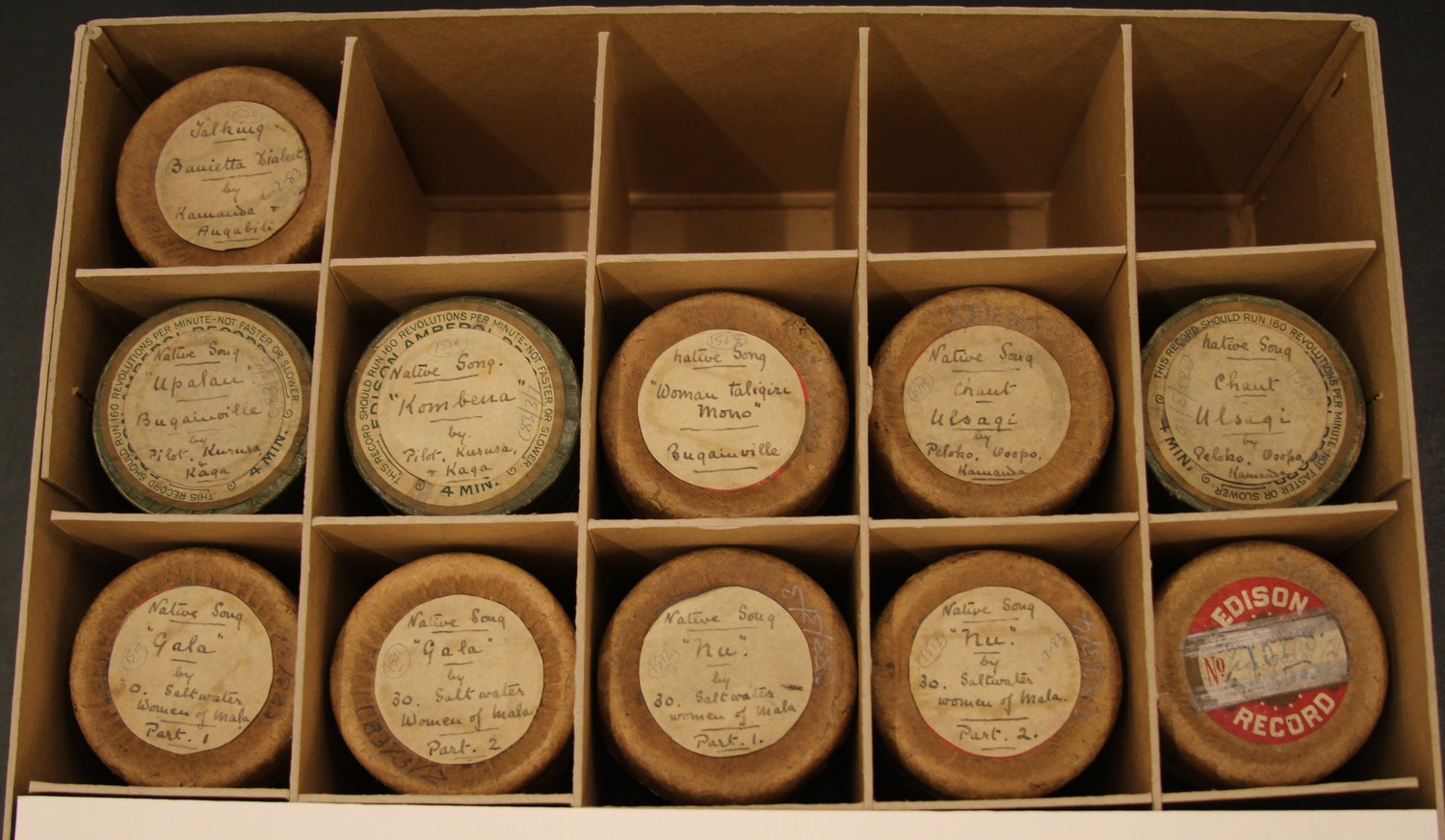 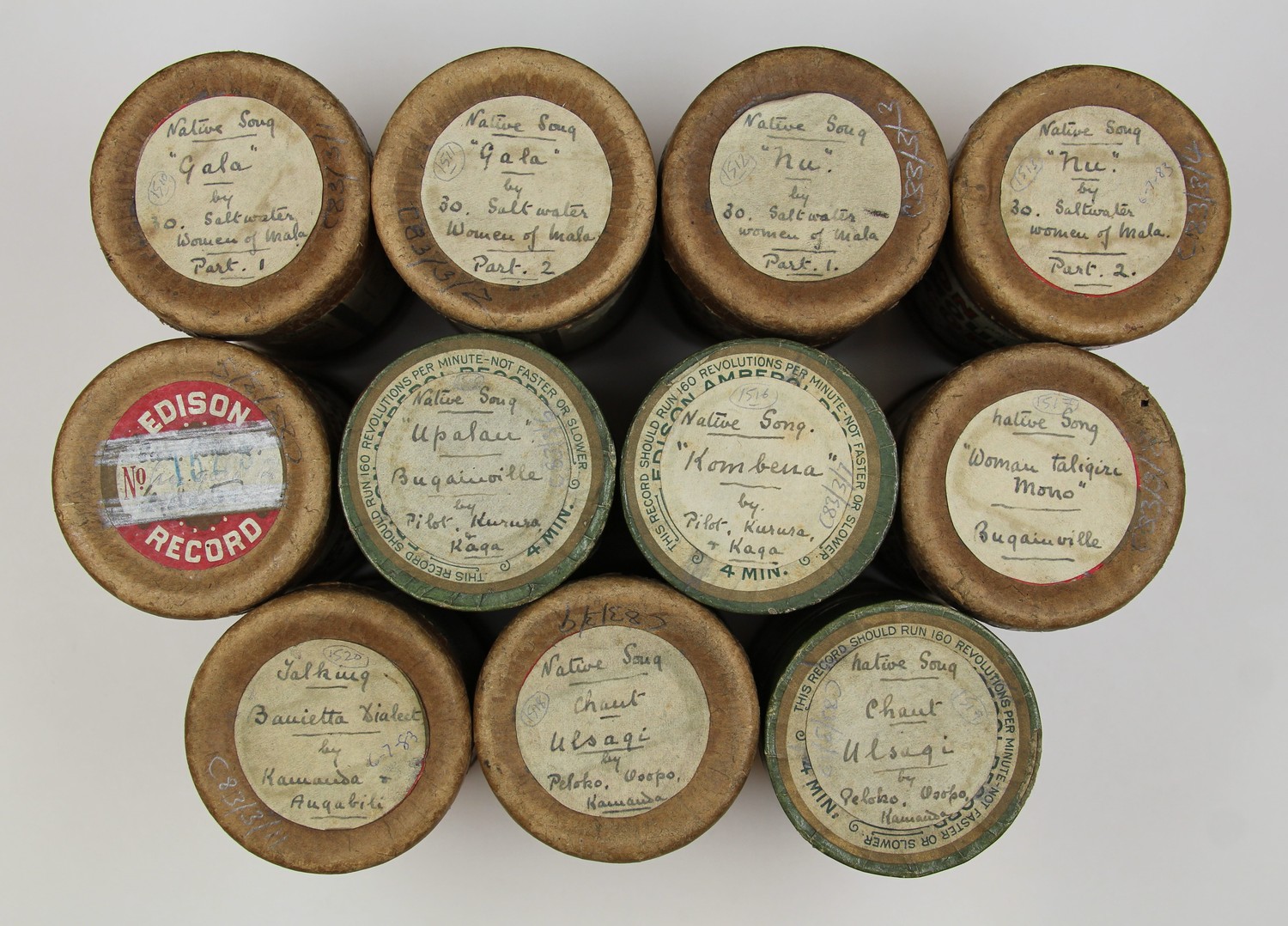 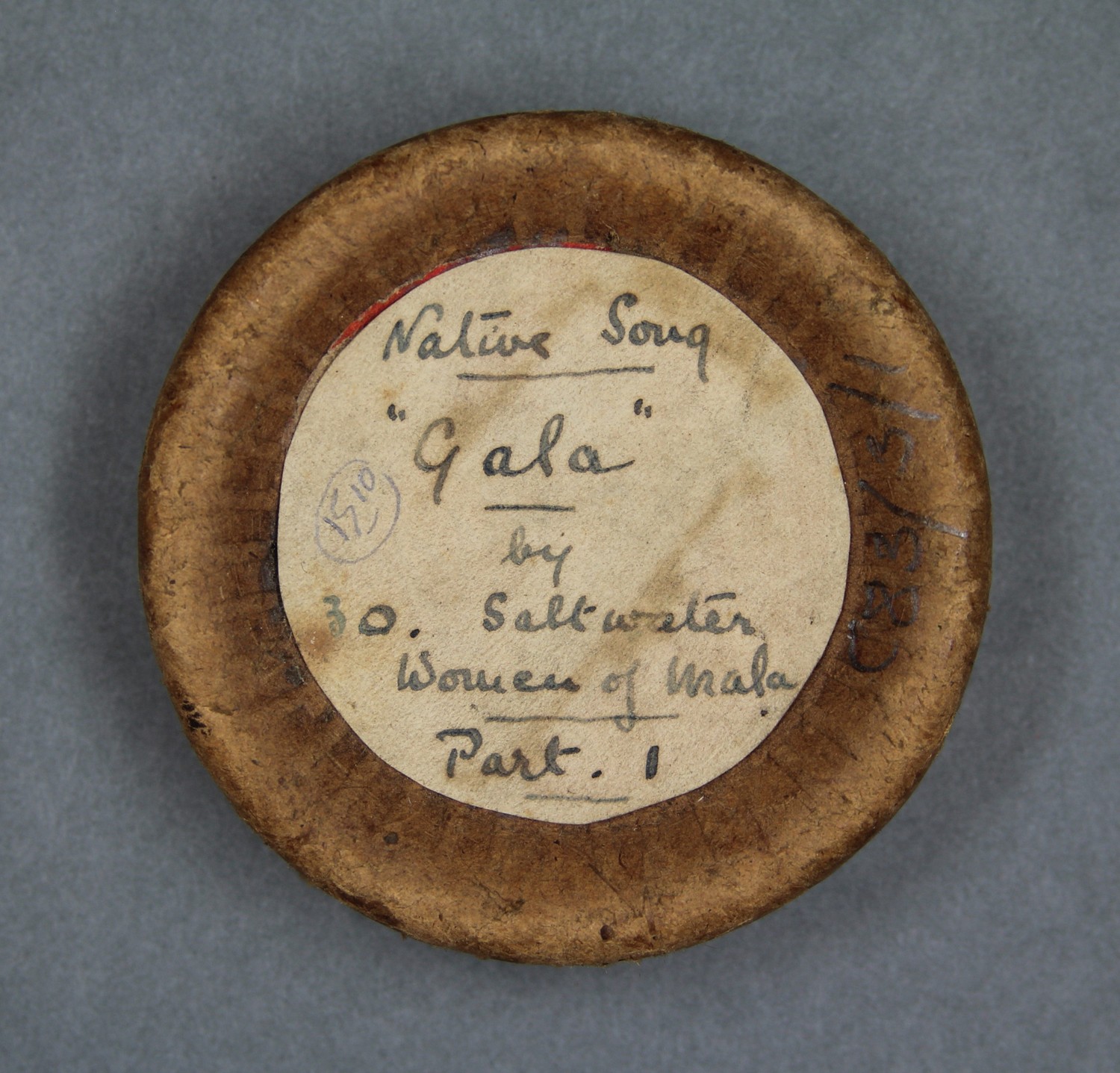 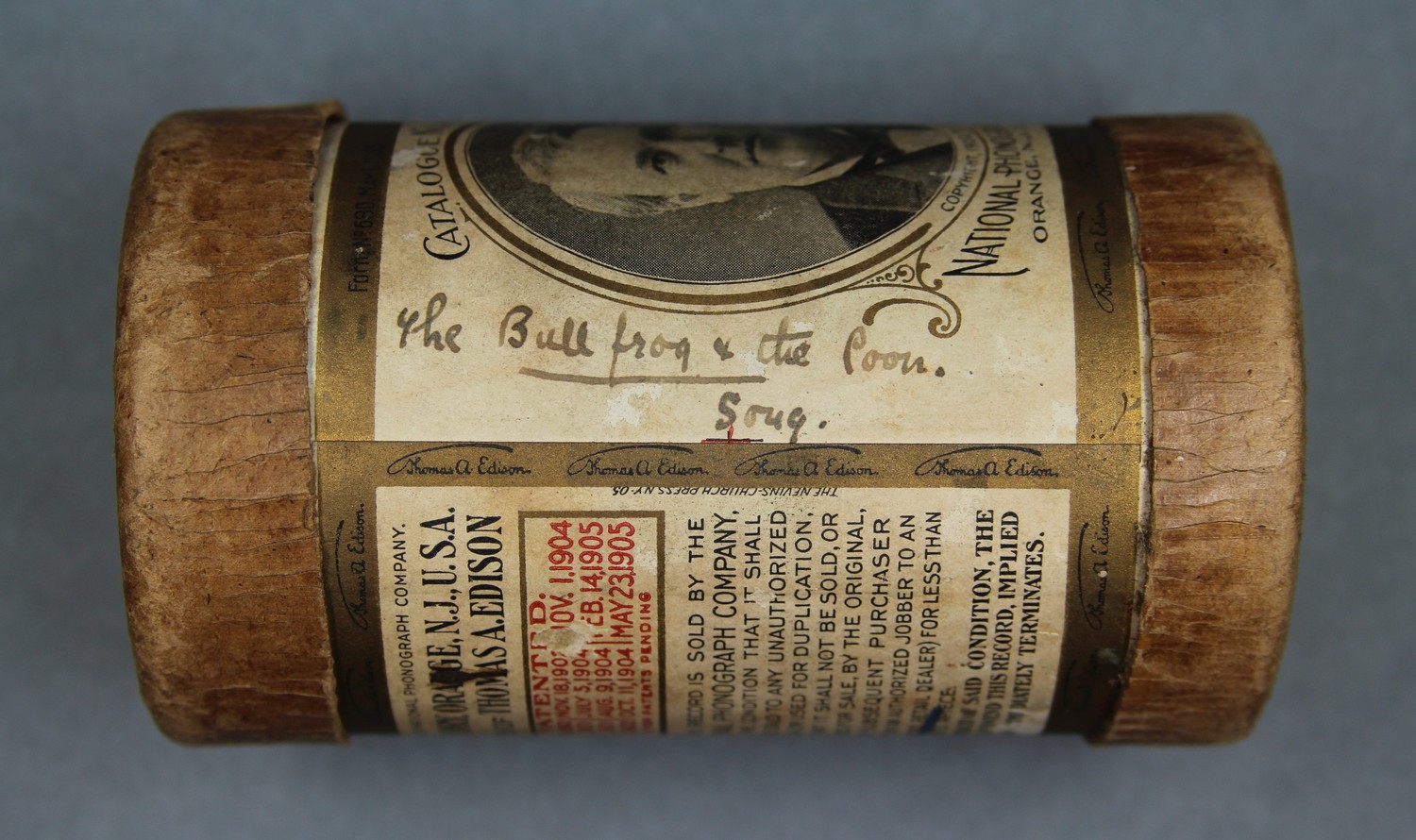 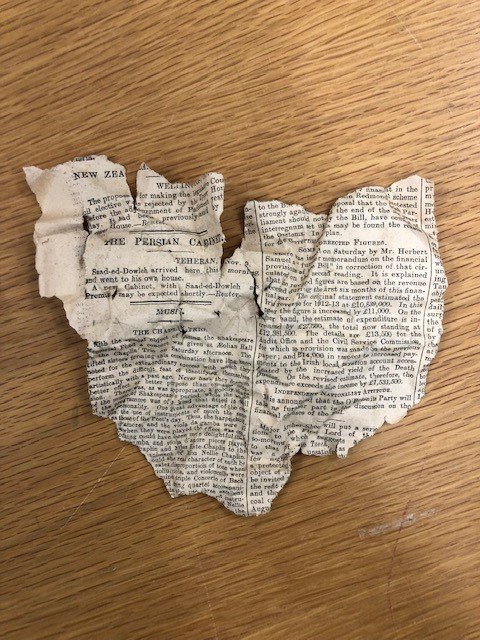  | ||||||
| C83/1511 | Native Song "Gala" by 30 Saltwater Women of Mala. Part 2 | Unidentified (chorus, female) | British Solomon Islands Protectorate | December 1904 – January 1915 | Female vocal group, unaccompanied. | From Langalanga Lagoon, Malaita, Solomon Islands | Wala | Field recordings | Edge-Partington, Thomas William, 1883–1920 | 2'36" | Thomas Edge-Partington, 1909-1914 | Brown wax cylinder | C83 Thomas Edge-Partington 1909-1914 British Solomon Islands Protectorate Cylinder Collection | British Library |   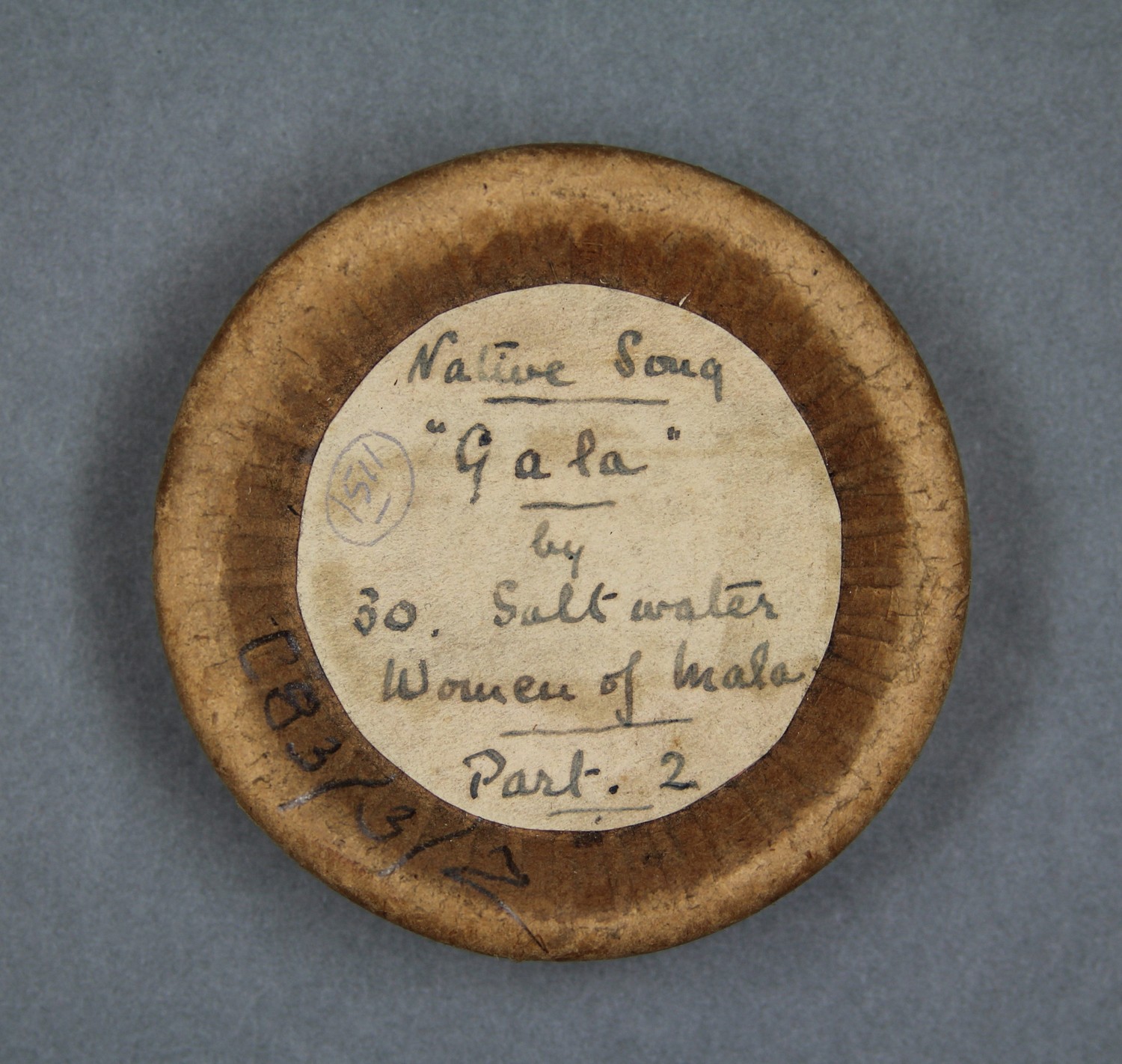    | |||||||
| C83/1512 | Native Song "Nu", by 30 Saltwater women of Mala. Part 1 | Unidentified (chorus, female) | British Solomon Islands Protectorate | December 1904 – January 1915 | Female vocal group, unaccompanied. | From Langalanga Lagoon, Malaita, Solomon Islands | Wala | Field recordings | Edge-Partington, Thomas William, 1883–1920 | 2'35" | Thomas Edge-Partington, 1909-1914 | Brown wax cylinder | C83 Thomas Edge-Partington 1909-1914 British Solomon Islands Protectorate Cylinder Collection | British Library |   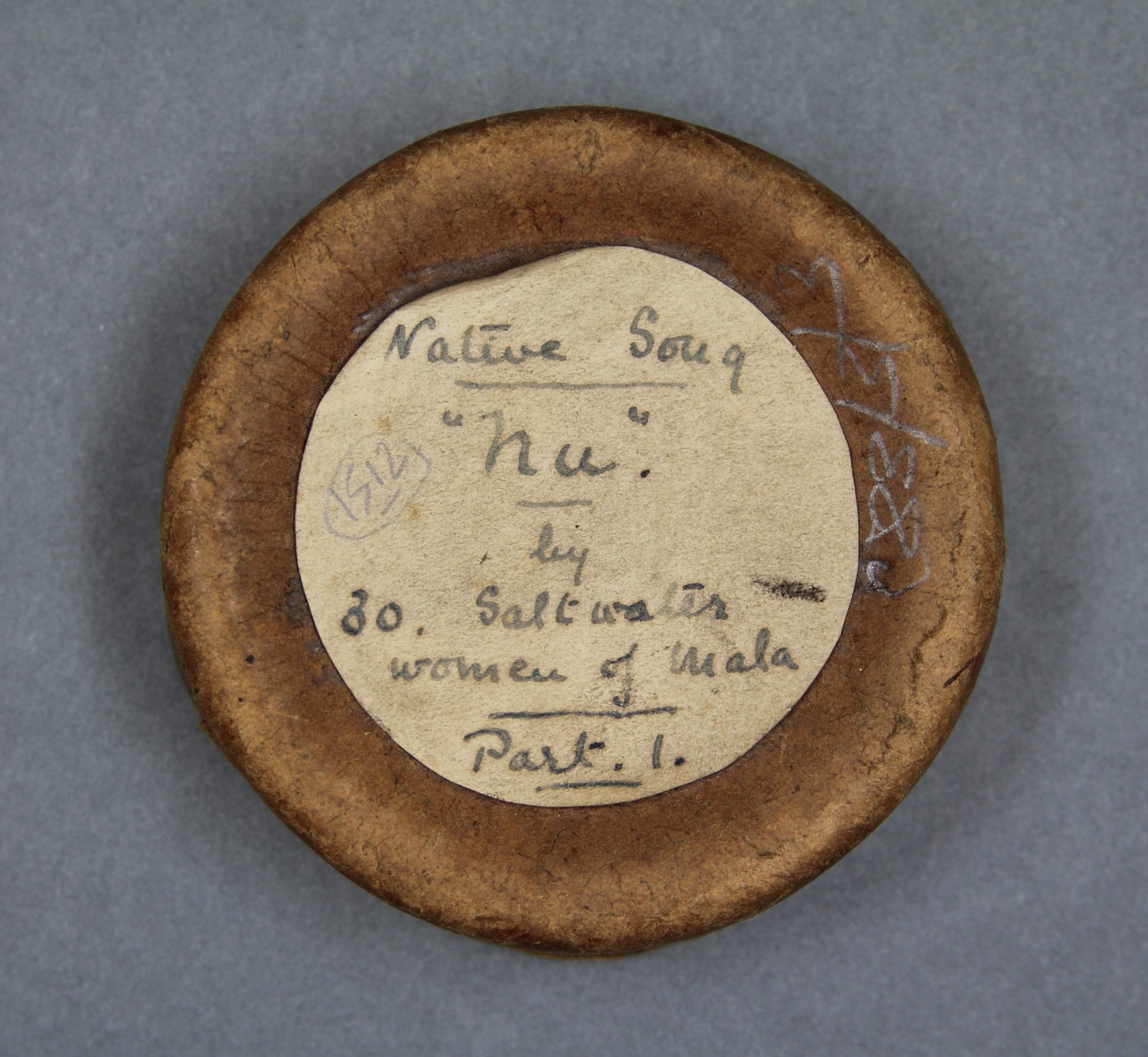    | |||||||
| C83/1513 | Native Song "Nu", by 30 Saltwater women of Mala. Part 2 | Unidentified (chorus, female) | British Solomon Islands Protectorate | December 1904 – January 1915 | Female vocal group, unaccompanied. | From Langalanga Lagoon, Malaita, Solomon Islands | Wala | Field recordings | Edge-Partington, Thomas William, 1883–1920 | 2'35" | Thomas Edge-Partington, 1909-1914 | Brown wax cylinder | C83 Thomas Edge-Partington 1909-1914 British Solomon Islands Protectorate Cylinder Collection | British Library |       | |||||||
| C83/1514 | Nu. Gala (2) | Unidentified (chorus) | British Solomon Islands Protectorate | December 1904 – January 1915 | Vocal group, unaccompanied. | From Langalanga Lagoon, Malaita, Solomon Islands | Reasonable quality recording. | Wala | Field recordings | Edge-Partington, Thomas William, 1883–1920 | 2'35" | Thomas Edge-Partington, 1909-1914 | Brown wax cylinder | C83 Thomas Edge-Partington 1909-1914 British Solomon Islands Protectorate Cylinder Collection | British Library |   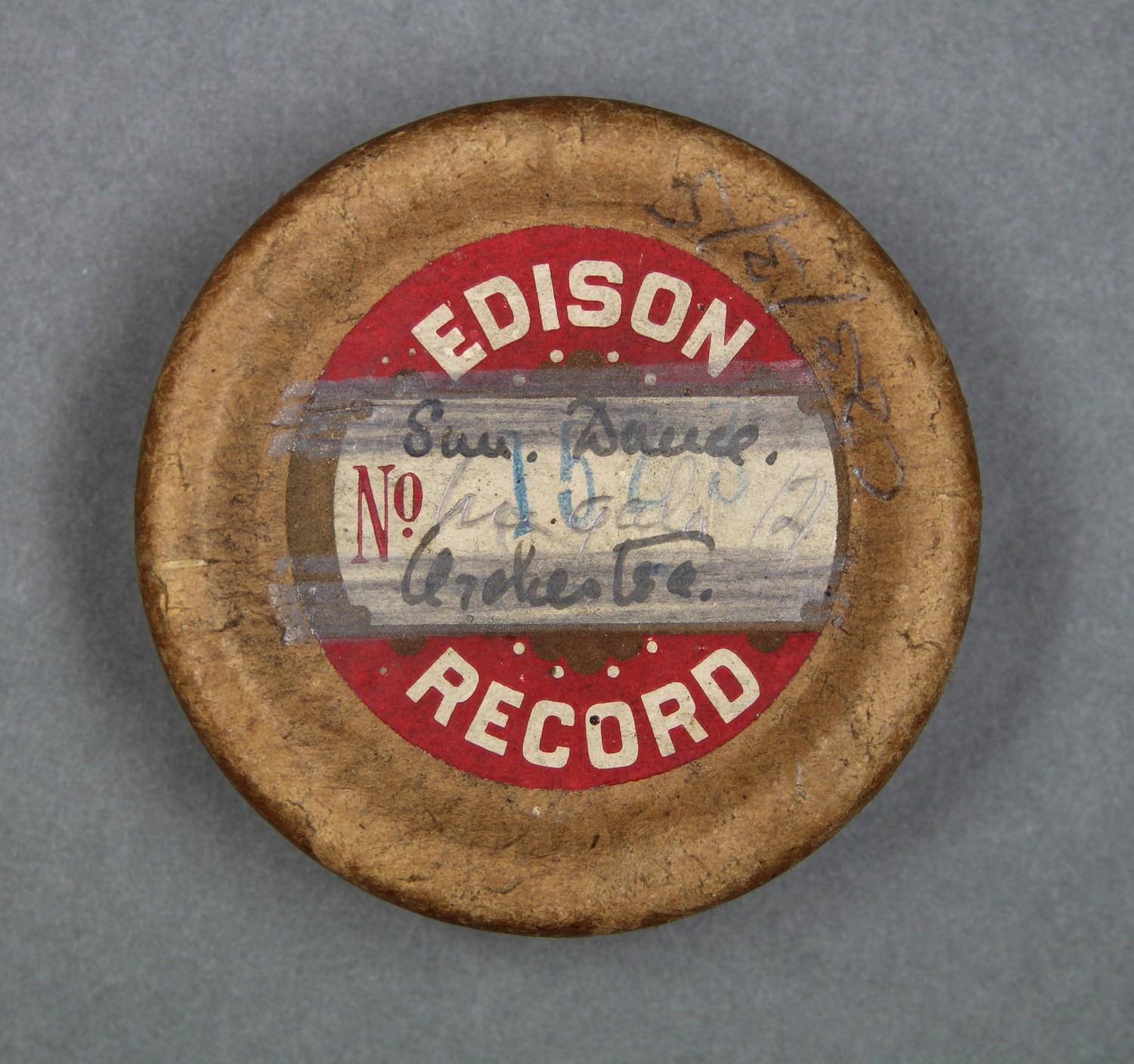    |
Bougainville / Shortland Islands
The recordings of these three cylinders, C83/1515-1517, probably come from the area around Alu and the Bougainville Straits. The performers noted for C83/1515 and C83/1516, Pilot, Kurura and Kaga, were men from Alu, employed by Edge-Partington in September 1909 (Edge-Partington 1910d). Pilot was probably a nickname or title that came from this man’s work on ships. The Alu provenance indicates that the recordings may be in the Mono language [mte], which has 2940 speakers across the islands of Mono, Alu, and Fauru (Eberhard 2021:28).
The song noted as Kombena on C83/1516 may be related to a song referenced by Wheeler “73 KOMA KOMPENA (Text of a song from Lavelai in Buim [sic]: probably in Telei speech)” (1926:150). Wheeler noted elsewhere that “Buim” was the Mono name for the southern part of Bougainville (1913:739); the town and area is known as “Buin.” Wheeler noted that he heard the song on the island of Alu, but did not publish the text. It is possible that this song features the Telei language. The Telei or Terei language [buo], also known as Buin, has 26,500 speakers (Eberhard 2021:140).
Edge-Partington did not record the names of the performers for C83/1517; the voices seem to be male. The lid notes both “Woman Taligiri Mono” and “Buganville”, but it is not clear exactly what these refer to, although it seems likely that the performers were from Mono or elsewhere in the Bougainville Straits.
It is not known whether Edge-Partington visited Alu, or how he recruited Pilot, Kurura, and Kaga. There are 11 objects from Bougainville in the Edge-Partington collection at the Auckland Museum (Neich 2009:91), and 15 armbands from the Shortlands-Bougainville region in the British Museum, donated by Mary Edge-Partington.6British Museum numbers Oc1921,1102.15–29. However, as Tim Thomas points out, these armbands may also have been available in the Western Solomon Islands as trade items (Tim Thomas email to Vicky Barnecutt, 23 February 2021), and there were many connections between the regions at this time, encouraged by trader, colonial, and mission activity. David Akin notes that armbands were traded a lot across the archipelago as they were easy to transport (Akin email to Barnecutt, 27 July 2021).
| British Library shelfmark | Recording title | Performer name | Recording location | Recording date | Content description | Performer description | Recording notes | Languages | Genre | Recordist | Recording length | Recording trip | Description of cylinder | Collection title | Cylinder location | Images of cylinder containers / documentation | Related print publication: | Related print publication: | Related print publication: | Related print publication: | Related print publication: | Related print publication: |
|---|---|---|---|---|---|---|---|---|---|---|---|---|---|---|---|---|---|---|---|---|---|---|
| C83/1515 | Native Song "Upalau". Bugainville by Pilot, Kurura, + Kaga | Pilot (singer, male); Kurura (singer, male); Kaga (singer, male) | British Solomon Islands Protectorate | December 1904 – January 1915 | 1. Announcement: "Upalau". 2. Male vocal trio, unaccompanied. | From Alu / Shortland Island, Solomon Islands | Reasonable quality recording. | Field recordings | Edge-Partington, Thomas William, 1883–1920 | 2'33" | Thomas Edge-Partington, 1909-1914 | Brown wax cylinder | C83 Thomas Edge-Partington 1909-1914 British Solomon Islands Protectorate Cylinder Collection | British Library |       | |||||||
| C83/1516 | Native Song. "Kombena" by Pilot, Kurura, + Kaga. | Pilot (singer, male); Kurura (singer, male); Kaga (singer, male) | British Solomon Islands Protectorate | December 1904 – January 1915 | 1. Announcement: "Kom, kombena by Pilot, Kurura and Kaga". 2. Male vocal trio, unaccompanied. | From Alu / Shortland Island, Solomon Islands | Good quality recording. | Field recordings | Edge-Partington, Thomas William, 1883–1920 | 2'24" | Thomas Edge-Partington, 1909-1914 | Brown wax cylinder | C83 Thomas Edge-Partington 1909-1914 British Solomon Islands Protectorate Cylinder Collection | British Library |   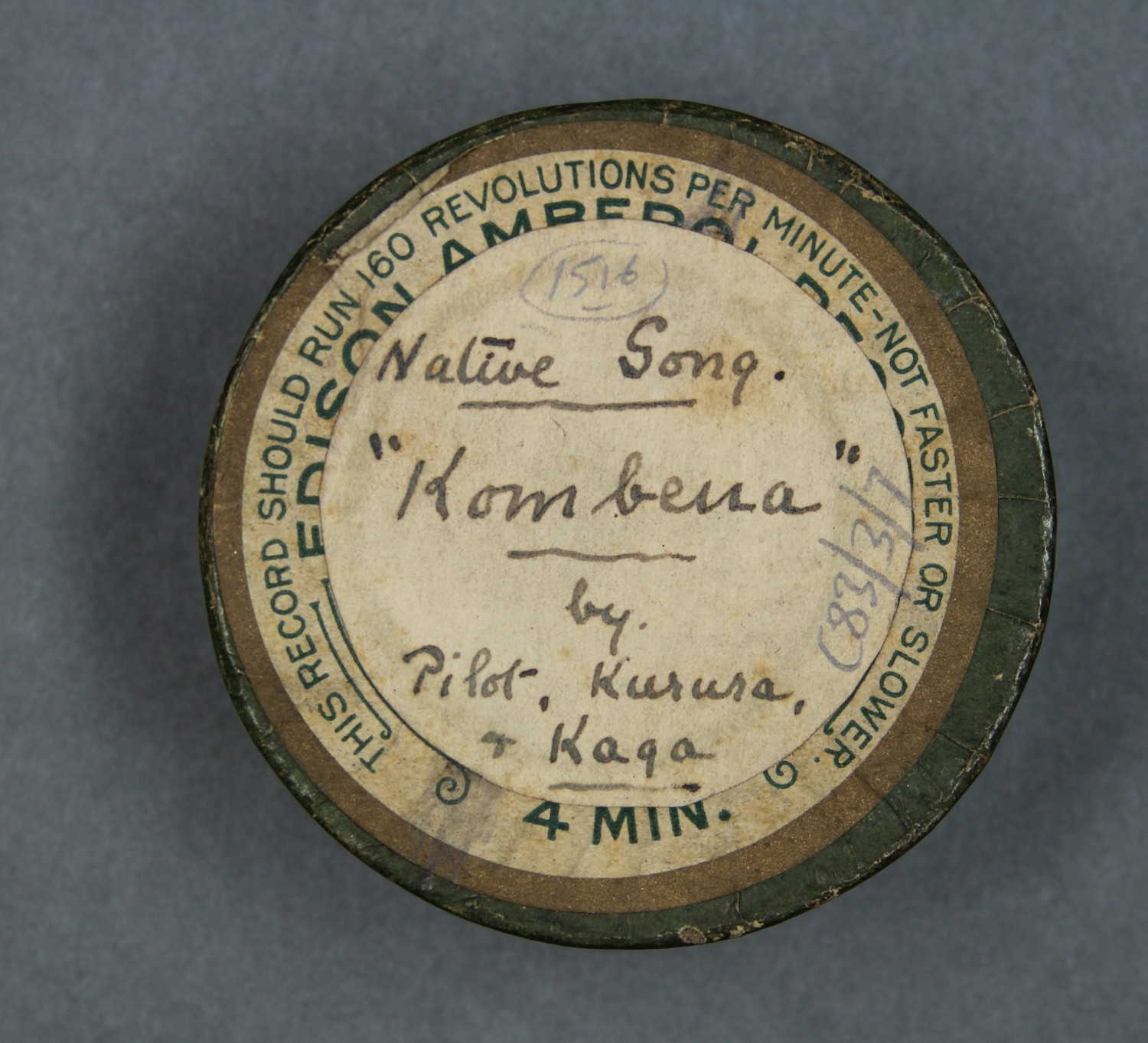    | |||||||
| C83/1517 | Native Song "Woman taligiri Mono" Bugainville. | Unidentified (chorus) | British Solomon Islands Protectorate | December 1904 – January 1915 | 1. Vocal group, unaccompanied. | From Mono, Solomon Islands | Field recordings | Edge-Partington, Thomas William, 1883–1920 | 2'06" | Thomas Edge-Partington, 1909-1914 | Brown wax cylinder | C83 Thomas Edge-Partington 1909-1914 British Solomon Islands Protectorate Cylinder Collection | British Library |   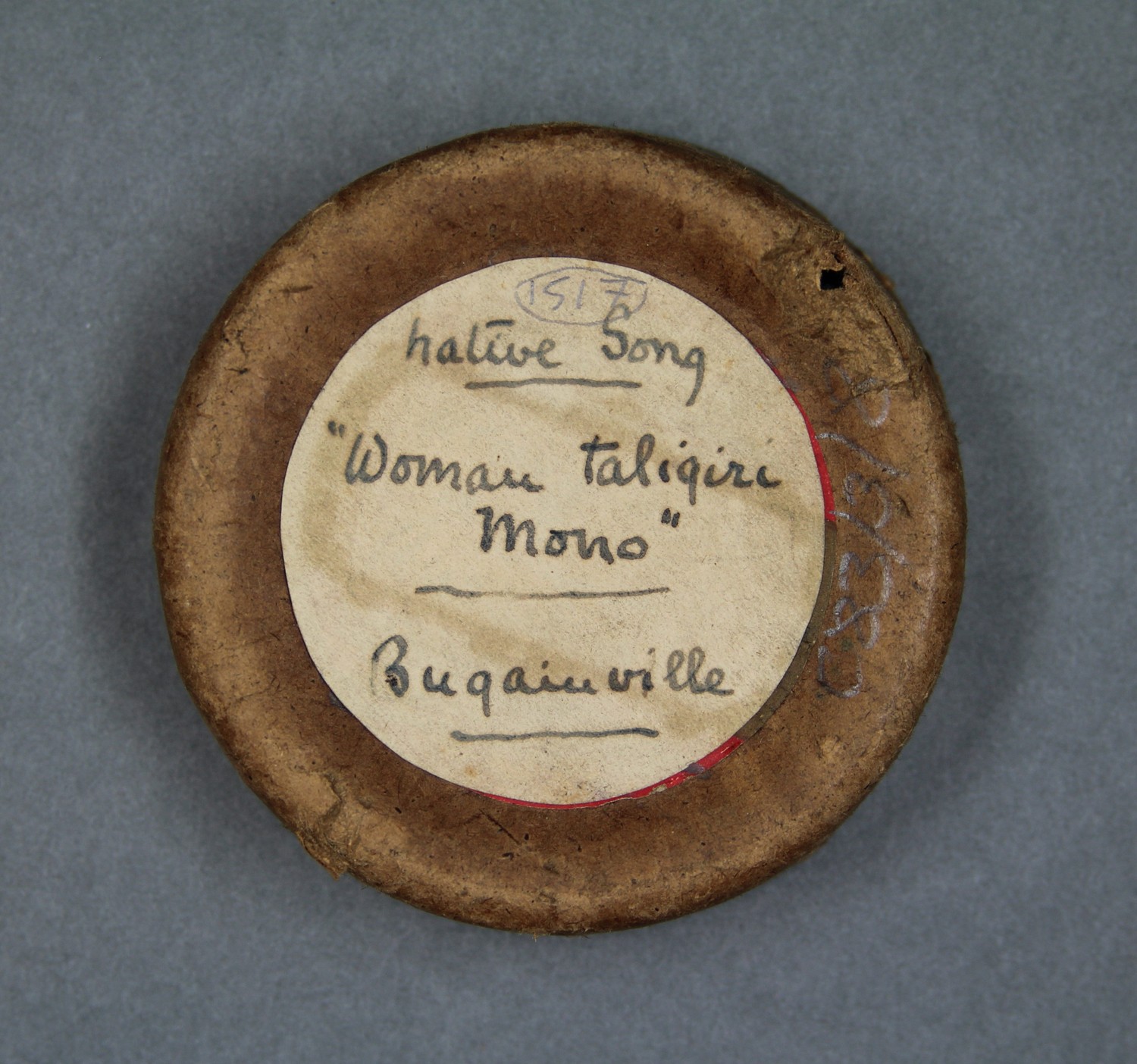    |
New Georgia
Information on the lids of C83/1518–1520 indicate that the cylinders include material performed by individuals from the New Georgia region. The lids from C83/1518 and C83/1519 both record “Chant – Ulsagi”, performed by Peloko, Usopo, and Kamanda. The lid of C83/1520 notes the recording as “Talking – Banietta dialect by Kamanda and Angabili.” Edge-Partington noted that he employed these four men from 1 September 1910, and that Kamanda, Osopo (Usopo), and Angabili were from “Banietta” whilst Peloko was from “Vangunu” (1910d).
Baniata is an area on the south-west of Rendova Island; the language is known as Touo [tqu] or Mbaniata, and is spoken by 1870 people (Eberhard 2021:24). Vangunu is one of the islands of the New Georgia group, between New Georgia itself and Nggatokae Island. Marovo Lagoon lies off the coast of these islands. Tim Thomas notes that Ulusage or Ulusaghe is the old name for Marovo, or at least the main eastern part from Viru Harbour to Gatokae Island. Hocart referred to Ulusage as the area around the Marovo Lagoon on the west side of New Georgia (Hocart 1922:292; 1931:304). Ulusagi was noted as “the language of Viru and all through the Lagoon” on the east coast of New Georgia (The Australasian, 8 March 1915), by the Adventist missionaries who worked there in 1914. There are 8090 speakers of the Marovo [mvo] language (Eberhard et al. 2021:19). Kamanda and Osopo presumably spoke both Baniata and Ulusagi / Marovo languages.
Notes from Edvard Hviding, anthropologist at University of Bergen:
[T]he performer Peloko was a well-known ritual specialist in the eastern New Georgia (ie. Ulusaghe) around the time of the first Methodist missionaries (and his group was indeed missionized by them). (email to Don Niles, 10 August 2001)
[I]n Ulusaghe they speak the Marovo language, not Roviana (but related to it). Nowadays old people of Roviana (Munda, Vonavona and thereabouts) still refer to the Marovo language as “zinama Ulusaghe”;“Ulusaghe language”. So this must be Peloko et al. demonstrating their Marovo vernacular. (email to Don Niles, 13 August 2001)
| British Library shelfmark | Recording title | Performer name | Recording location | Recording date | Content description | Performer description | Recording notes | Languages | Genre | Recordist | Recording length | Recording trip | Description of cylinder | Collection title | Cylinder location | Images of cylinder containers / documentation | Related print publication: | Related print publication: | Related print publication: | Related print publication: | Related print publication: | Related print publication: |
|---|---|---|---|---|---|---|---|---|---|---|---|---|---|---|---|---|---|---|---|---|---|---|
| C83/1518 | Native Song Chant Ulsagi, by Peloko, Usopo, Kamanda | Peloko (singer, male); Usopo (singer, male); Kamanda (singer, male) | British Solomon Islands Protectorate | December 1904 – January 1915 | 1. Announcement: "Peloko, Usopo [indecipherable]". 2. Male vocal trio, unaccompanied. NOTE: Chant Uisai originally transcribed from lid as Chaut Ulsagi but corrected by cataloguers to Chant Uisai ["Uisai" is the name for both the north eastern part of Buin district and the dialect of Buin language spoken in that region.] | From Marovo Lagoon, New Georgia, Solomon Islands | Marovo | Field recordings | Edge-Partington, Thomas William, 1883–1920 | 2'23" | Thomas Edge-Partington, 1909-1914 | Brown wax cylinder | C83 Thomas Edge-Partington 1909-1914 British Solomon Islands Protectorate Cylinder Collection | British Library |       | |||||||
| C83/1519 | Native Song Chant Ulsagi, by Peloko, Usopo, Kamanda | Peloko (singer, male); Usopo (singer, male); Kamanda (singer, male) | British Solomon Islands Protectorate | December 1904 – January 1915 | 1. Announcement: "Kera kera [indecipherable.] Ulsagi; Peloko, Usopo, Kumanda". 2. Vocal trio, unaccompanied. | From Marovo Lagoon, New Georgia, Solomon Islands | Marovo | Field recordings | Edge-Partington, Thomas William, 1883–1920 | 2'23" | Thomas Edge-Partington, 1909-1914 | Brown wax cylinder | C83 Thomas Edge-Partington 1909-1914 British Solomon Islands Protectorate Cylinder Collection | British Library |       | |||||||
| C83/1520 | Talking Banietta Dialect by Kamanda + Angabili | Kamanda (speaker, male); Angabili (speaker, male) | British Solomon Islands Protectorate | December 1904 – January 1915 | 1. Male vocal dialogue. | From Rendova, New Georgia, Solomon Islands | The language is possibly Touo | Field recordings | Edge-Partington, Thomas William, 1883–1920 | 2'34" | Thomas Edge-Partington, 1909-1914 | Brown wax cylinder | C83 Thomas Edge-Partington 1909-1914 British Solomon Islands Protectorate Cylinder Collection | British Library |   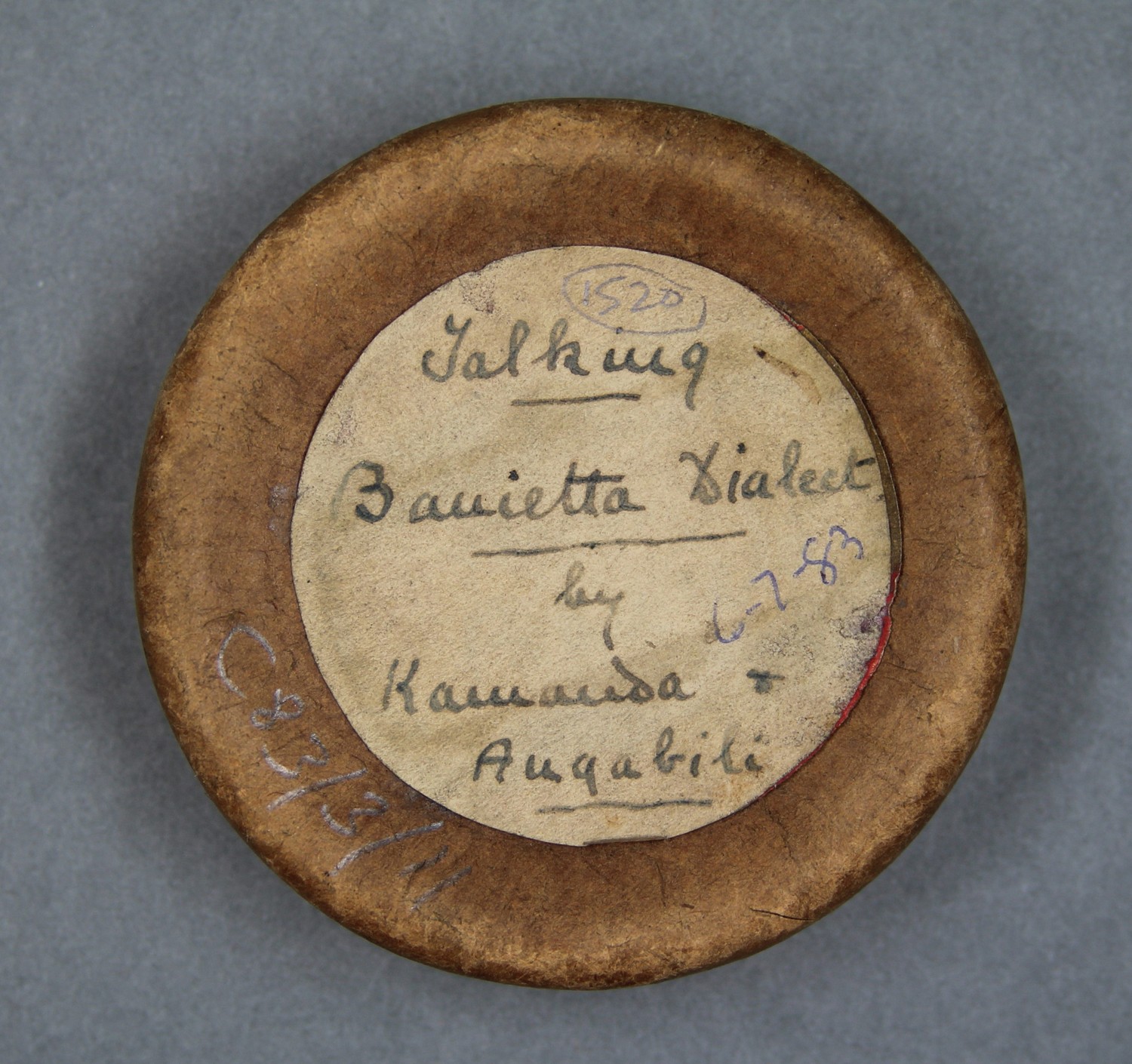 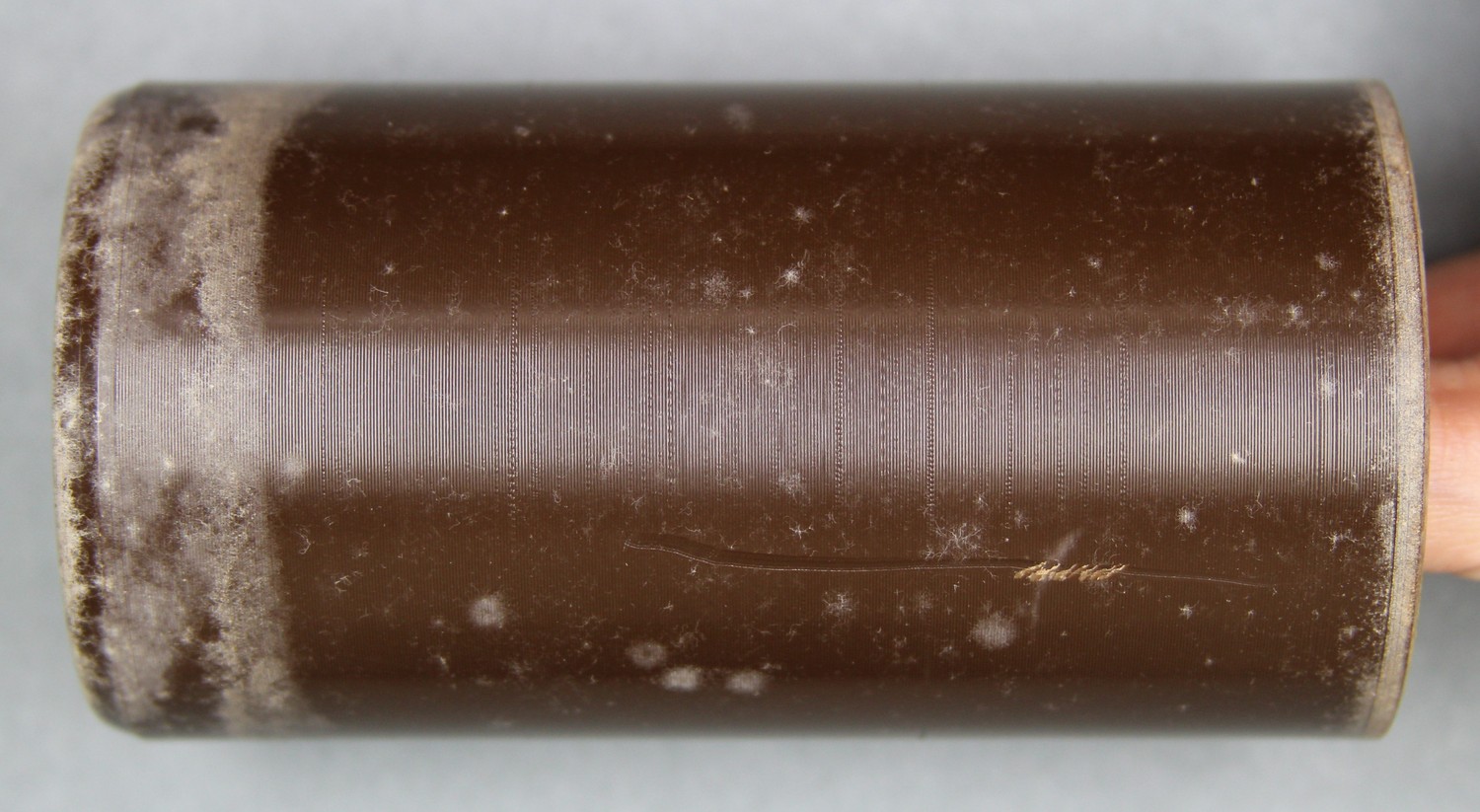 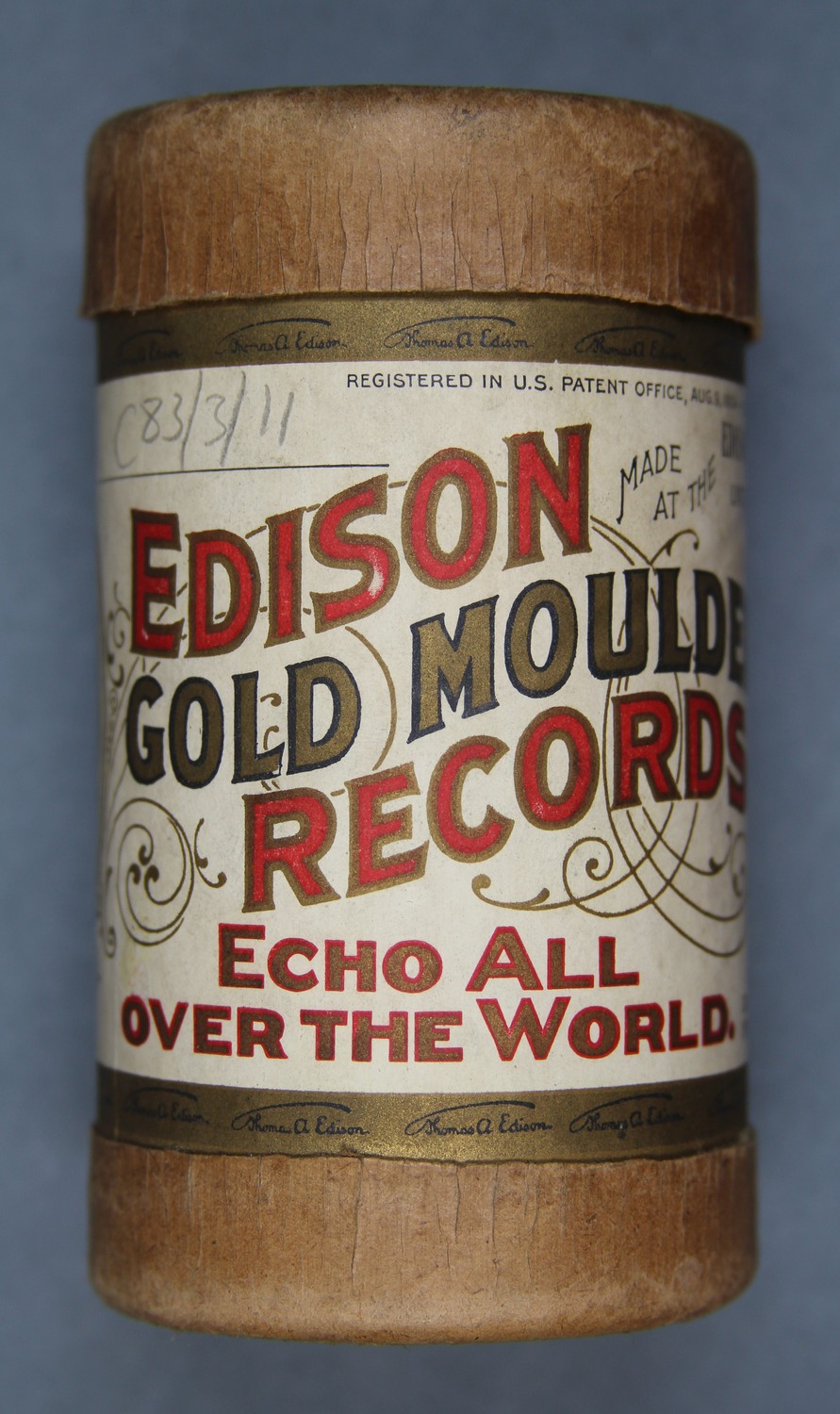  |
- Anonymous. 1950. ‘The Hocart Papers in the Turnbull Library’, Journal of the Polynesian Society 59, 3: 268–272.
- Bayliss-Smith, Tim. 2014. “Appendix 1.”In Edvard Hviding and Cato Berg (eds.) The Ethnographic Experiment. A. M. Hocart and W. H. R. Rivers in Island Melanesia, 1908. Oxford: Berghahn Books, 282–290.
- Crowe, Peter Russell. 1998. “Melanesia.” In Adrienne L. Kaeppler, J. W. Love, Stephen A. Wild, Don Niles, Peter Russell Crowe, Barbara B. Smith, Amy Ku’uleialoha Stillman, and Philip Hayward (eds) The Garland Encyclopedia of World Music, Vol 9. Australia and the Pacific islands. New York: Garland Publishing. pp. 991–994.
- Eberhard, David M., Gary F. Simons, and Charles D. Fennig (eds.) 2021. Ethnologue: Languages of the World. Twenty-fourth edition. Dallas, Texas: SIL International.
- Hocart, Arthur Maurice. 1922. “The Cult of the Dead in Eddystone of the Solomons.”The Journal of the Royal Anthropological Institute of Great Britain and Ireland, 52: 71–112, 259–305.
- Hocart, Arthur Maurice. 1908. Fieldnotes, pp 1–1596. [Manuscript] Hocart, Arthur Maurice 1883-1939: Papers, MS-Papers-0060. Wellington, New Zealand: Alexander Turnbull Library. Microfilmed c. 1975 by the Alexander Turnbull Library. https://tiaki.natlib.govt.nz/#details=ecatalogue.9564
- Hocart, Arthur Maurice. n.d. Music. Typescript about the music of Simbo Island. [Manuscript] Hocart, Arthur Maurice 1883-1939: Papers, MS-Papers-0060. Wellington, New Zealand: Alexander Turnbull Library. Microfilmed c. 1975 by the Alexander Turnbull Library. https://tiaki.natlib.govt.nz/#details=ecatalogue.9564
- Hocart, Arthur Maurice. n.d. Handwritten note to Berliner Phonogramm-Archiv, listing contents of the wax cylinders. Berlin: Berliner Phonogramm-Archiv.
- Hocart, Arthur Maurice. 1922. “The Cult of the Dead in Eddystone of the Solomons”. The Journal of the Royal Anthropological Institute of Great Britain and Ireland, 52: 71–112, 259–305.
- Hocart, Arthur Maurice. 1925. “Medicine and Witchcraft in Eddystone of the Solomons”. The Journal of the Royal Anthropological Institute of Great Britain and Ireland, 55:229–270.
- Hocart, Arthur Maurice. 1930. “An Anthropologist in the Solomon Islands”. The Listener.
- Hocart, Arthur Maurice. 1931. “Warfare in Eddystone of the Solomon Islands”. The Journal of the Royal Anthropological Institute of Great Britain and Ireland, 61:301–324.
- Hviding, Edvard and Cato Berg (eds). 2014. The Ethnographic Experiment. A. M. Hocart and W. H. R. Rivers in Island Melanesia, 1908. Oxford: Berghahn Books.
- Rivers, William Halse Rivers. 1914a. Kinship and Social Organisation. London: Constable & Co. Available online at http://www.gutenberg.org/files/44728/44728-h/44728-h.htm
- Rivers, William Halse Rivers. 1914b. The History of Melanesian Society. Two volumes. Cambridge: Cambridge University Press. Available at: https://wellcomelibrary.org/item/b31362692
- Scales, Ian. 1999. Document on Hocart wax cylinders. London: British Library Sound Archive, World and Traditional Museum archives, May 1999.
- Thomas, Tim. 2014. “Objects and Photographs from the Percy Sladen Trust Expedition”. In Edvard Hviding and Cato Berg (eds). The Ethnographic Experiment. A. M. Hocart and W. H. R. Rivers in Island Melanesia, 1908. Oxford: Berghahn Books, 252–281.
- Waterhouse, J.H.L. 1949. A Roviana and English Dictionary. Sydney: Epworth Printing and Publishing House.
- Ziegler, Susanne. 2006. Die Wachszylinder des Berliner Phonogramm-Archivs. Veröffentlichungen des Ethnographischen Museums Berlin, 73. Berlin: Ethnologisches Museum, Staatliche Museen zu Berlin.




